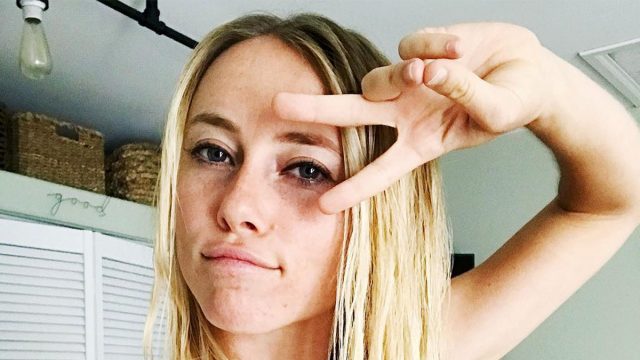13 Clear Signs You're Actually Losing Weight

Have you ever felt frustrated stepping on the scale, wondering if your weight loss efforts are actually working? You're not alone. While the number on the scale might not budge, your body could be going through important changes that signal progress.
Autumn Bates, a certified clinical nutritionist with a master's in nutrition and human performance, has helped thousands achieve their weight loss goals through science-backed strategies. Through her own postpartum weight loss journey and work with clients, she's identified three distinct phases of healthy fat loss that can help you recognize when you're on the right track.
Phase 1: The Reset and Rebuild Stage
"Many people who have tried to lose weight in the past are chronically eating low calories and overexercising," Bates explains in her post. This first phase focuses on healing your metabolism and rebuilding strength. You might be in this phase if you notice these signs:
1. Experiencing persistently low energy levels
2. Having difficulty losing weight despite strict dieting
3. Struggling with poor sleep quality
4. Gaining weight easily when eating starches or treats.
During this phase, Bates recommends focusing on protein, healthy fats, and fiber while incorporating gentle movement and resistance training. "This helps signal to your body that it's not in a state of starvation and can start letting go of body fat," she notes.
RELATED: 30 Best Protein Foods That Melt Fat Almost Instantly
Phase 2: The Transformation Stage
After establishing a strong foundation, the second phase is where visible changes begin. According to Bates, "This is when the magic really happens." You'll notice these five signs:
5. Clothes fitting looser
6. Body measurements decreasing
7. Significantly increased energy levels
8. Growing physical strength
9. Steady scale progress.
"During my eight-week transformation phase, I lost about 16 pounds, with most of it being pure body fat," Bates shares. This success comes from improved metabolic flexibility and insulin sensitivity established in Phase 1.
Phase 3: The Maintenance Adjustment
The final phase requires careful attention to avoid reversing progress. "This phase tends to confuse many people because they've been eating until satisfied for so long, but suddenly feel hungrier with the same amount of food," Bates explains. Look for these signs:
10. Increased hunger despite maintaining your usual portions
11. Workouts becoming more challenging
12. Noticeably lower body fat percentage
13. Higher muscle mass relative to body weight.
RELATED: 17 Pre-Meal Foods That Burn Fat Like Ozempic, According to an Expert
Making Smart Adjustments
During Phase 3, Bates recommends increasing food intake strategically: "What people do better with during this phase is either high-quality sources of fat or some high-quality sources of medium to high glycemic load carbohydrates." Good options include:
Healthy Fats:
- Avocados
- Cheese
- Olives
- Nuts and seeds
- Natural nut butters
Quality Carbohydrates:
- Sweet potatoes
- Quinoa
- Buckwheat
- Red lentil pasta
- Properly fermented sourdough.
RELATED: 8 High-Protein Foods with Nearly Zero Calories That Melt Fat
Avoiding Common Pitfalls
Before making adjustments, Bates advises checking if increased hunger is truly related to Phase 3 by asking:
- Have workouts become more challenging?
- Has stress increased?
- Has sleep quality decreased?
- Have you recently included more processed foods?
The answer to these questions will help determine if you need to adjust your nutrition or address other lifestyle factors first.
The Importance of Proper Nourishment
"Body recomposition, where you're losing fat while maintaining muscle mass, is much easier to sustain," Bates emphasizes. This approach nourishes the body, reduces hunger, and produces better results than simply eating less and moving more.
Remember that progress isn't always linear, and the scale doesn't tell the whole story. By understanding these three phases and their signs, you can make informed decisions about your nutrition and exercise routine, leading to sustainable, long-term results. And if you enjoyed this article, take advantage of these 15 Quick Ways to Lose Body Fat Percentage in a Week




